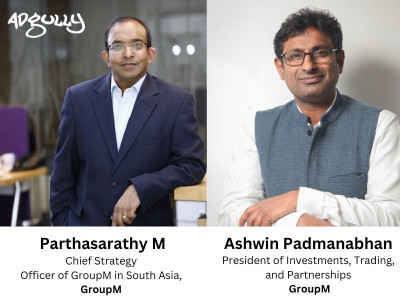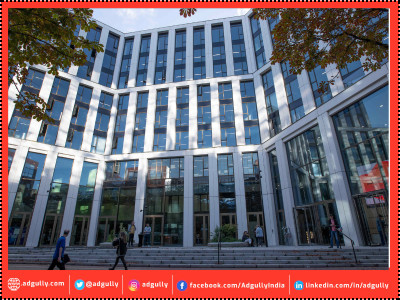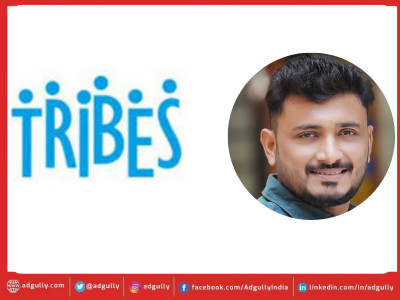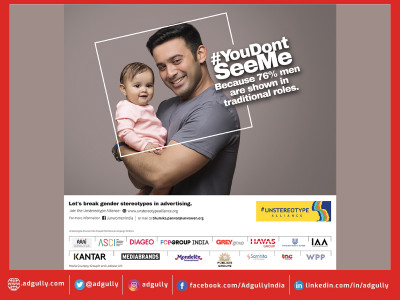Brand Voice, Sonic DNA, Conversational Tone – The new watchwords for brands
Niraj Ruparel, Head of Mobile & Emerging Tech, GroupM India; Head of Voice, WPP India, highlights the importance of voice and audio for the future, and how Voicetech and Adtech combined will enhance the user experience.
On an average, Indians spend 21.5 hours every week listening to music, against the global average of 17.8 hours. While the country is amid an audio revolution with our audio OTT market, the industry is projected to explode to 400 million in the coming years. These advancements offer Indian marketers and media planners an enormous and scalable market to tap into. Until now, brands have leveraged audio ad formats like audio-only ad spots, display, or content integrations like sponsored playlists or podcasts to facilitate positive brand interactions. However, as the world becomes increasingly voice-controlled, it is high time for brands to strengthen their sonic identity, given leading audio OTT platforms to offer new and influential ways for advertisers which triggers brand association.
Also read: WPP India ups the game to provide more agile client offerings & integrated teams
Sonic branding represents a big opportunity to integrate every audio touchpoint into a brand’s storytelling and spark emotion to drive audiences to action. From audio ads to conversational AI, it’s important to note that a short-term tactical approach likely won’t yield long-term equity. Without neglecting the customer experience, brands need to create reusable and genuine sonic assets that drive recognition at all touchpoints, which is only possible via a sonic branding strategy.
The best example could be the Windows 95 boot sound or the PlayStation’s start sound – with and without a disc. That was sonic branding right there – the use of various auditory elements (music, voice, and sound effects) to brand a product or service. These sonic assets are generally easy to remember and understand, humanising often trivial and “hidden” aspects of a brand’s identity along the way. They are essential in developing brand recognition in the long run and as such should be a no-brainer for every brand. We are talking about it now because of the huge advances in voice and voice-enabled technologies are changing the way people interact with the environment.
Hearing is our fastest sense despite us being a predominantly visually-oriented species. We are all conscious of brand logos, colour schemes, and various other imagery we relate and equate to their identity. However, we also perceive sound faster than anything else, which means there is every reason for the next campaign to “sound” more memorable than it looks. This throws up a whole new range of issues and opportunities for brands. Hence, ‘Brand Voice’, ‘Sonic DNA’ And ‘Conversational Tone’ have become the new watchwords for brands extending their reach to an interactive audio world, where consumers want to converse with brands and the technology exists to enable increasingly natural conversations between brand and customer.
According to Google’s Global Web Index, Voice Search Insight Report, 27% of the global online population uses voice search on mobile and as consumer expectation increases, technology has stepped up to meet the demand.
With interactions that go beyond the simple “yes or no” responses, interactive voice dialogue ads are poised to become more dynamic. Advertisers will be able to retarget listeners with new ad content optimised with full knowledge of each user’s engagement history with a campaign, along with their responses to each advertisement. With real-time insight into user intent and a high degree of nuance previously unseen, this helps the advertiser understand the degree to which a user is interested and, as importantly, why a user might be uninterested.
Over the past few years, the tech ecosystem has done a decent job when it comes to monetising their products and services via audio content and audio ads. Leading audio OTT players have introduced new products to harnesses contextual and programmatic ad inventory served in real-time by tagging parts of commercial scripts based on age, gender, location, weather, time, music preference, device, and other 3rd party data. This means partner brands will now be able to create millions of permutations for each creative depending on the characteristic differences of each individual.
Thanks to constant technological innovations, there are more and more ways to harness and deploy sonic branding to create a unique, more intimate experience at scale both for listeners and advertisers trying to reach them. This primarily refers to conversational AI, a huge step forward in delivering a 360° media experience.
We’re already seeing functional examples in rural India, where voice technology has become a necessity. In terms of advertising, leading ad tech firms are enabling people to talk to adverts and receive an AI-driven voice response just as you talk to Alexa or Google Assistant.
The dialogue-based ads offer the opportunity to tell meaningful stories via sonic branding whenever a brand’s sonic identity is heard. This is part of a broader effort to generate better brand engagement through audio, building on the existing experience where listeners had to say a verbal command to take action on the ad’s content. Thanks to 24/7 connectivity and access, any brand now can interweave its unique sonic signature into a consumer’s everyday life, from simply opening any sound-enabled app to listening to any piece of audio content.
As voice technology becomes better in language support, accuracy, and simplicity, we can also expect these ads to be more vernacular. Increasing digital penetration and cost-effectiveness of smart mobile devices have driven vernacular content diversity in India. In turn, Voicetech and Adtech combined will enhance the user experience through local languages and accents not only across ads, but across channels and publishers. This reality will feel seamless to the user and brand and evolve the market from one of the brands blindly chasing users across the web to a nuanced dialogue that feels like, well, just like a real conversation.
Our assumptions about voice tech are proving right: since voice is the natural way to communicate in the physical world, it should also be the case in the digital world. It was just a matter of tech catching up. Now with the right technology in place and friction removed, advertisers can experience one of the highest levels of engagement of any marketing channel while at the same time, users feel empowered to engage when and how they want.

















Share
Facebook
YouTube
Tweet
Twitter
LinkedIn